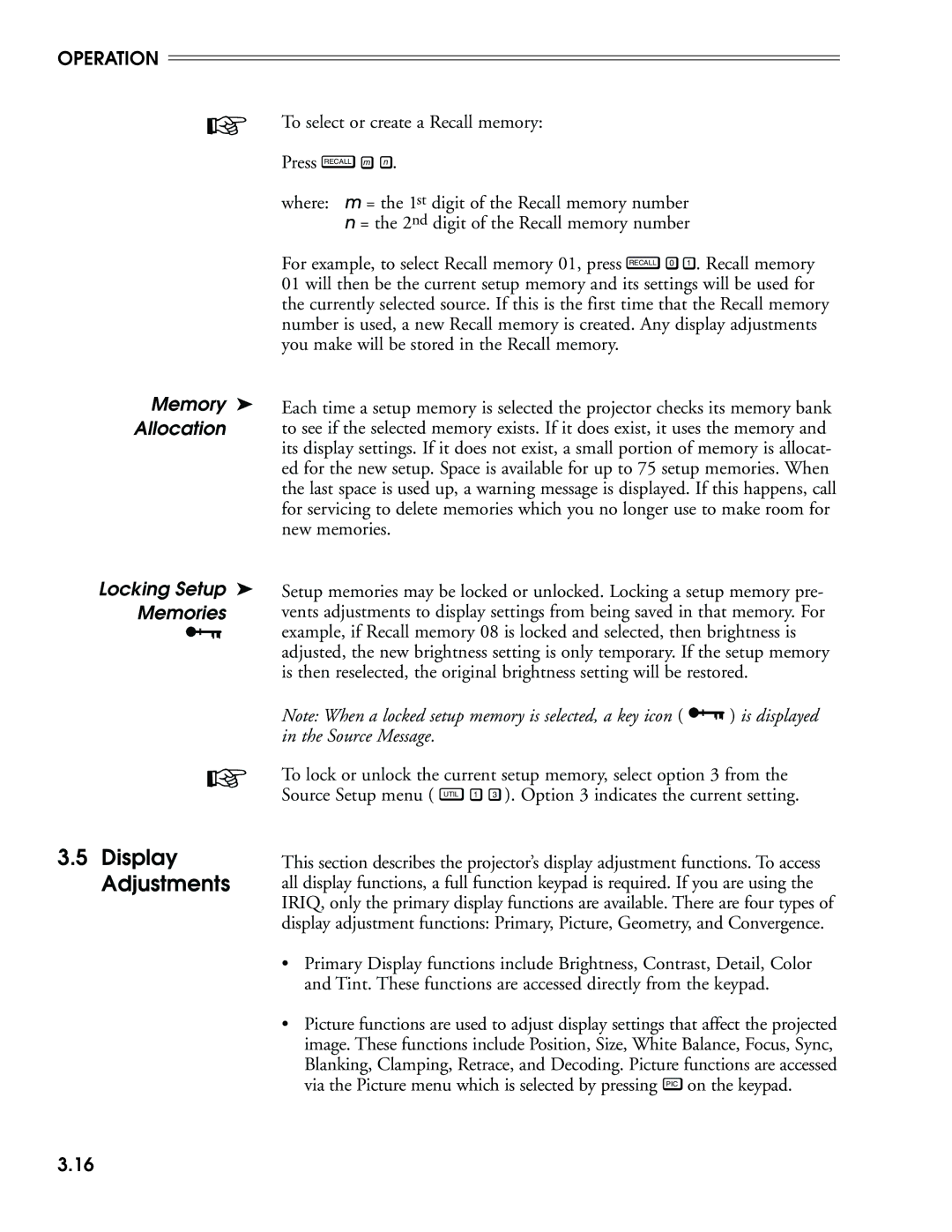
OPERATION
Memory ➤
Allocation
Locking Setup ➤
Memories
3.5Display Adjustments
To select or create a Recall memory:
Press RECALL m n .
where: m = the 1st digit of the Recall memory number n = the 2nd digit of the Recall memory number
For example, to select Recall memory 01, press RECALL 0 1 . Recall memory 01 will then be the current setup memory and its settings will be used for the currently selected source. If this is the first time that the Recall memory number is used, a new Recall memory is created. Any display adjustments you make will be stored in the Recall memory.
Each time a setup memory is selected the projector checks its memory bank to see if the selected memory exists. If it does exist, it uses the memory and its display settings. If it does not exist, a small portion of memory is allocat- ed for the new setup. Space is available for up to 75 setup memories. When the last space is used up, a warning message is displayed. If this happens, call for servicing to delete memories which you no longer use to make room for new memories.
Setup memories may be locked or unlocked. Locking a setup memory pre- vents adjustments to display settings from being saved in that memory. For example, if Recall memory 08 is locked and selected, then brightness is adjusted, the new brightness setting is only temporary. If the setup memory is then reselected, the original brightness setting will be restored.
Note: When a locked setup memory is selected, a key icon ( ![]()
![]()
![]()
![]()
![]() ) is displayed in the Source Message.
) is displayed in the Source Message.
To lock or unlock the current setup memory, select option 3 from the
Source Setup menu ( UTIL 1 3 ). Option 3 indicates the current setting.
This section describes the projector’s display adjustment functions. To access all display functions, a full function keypad is required. If you are using the IRIQ, only the primary display functions are available. There are four types of display adjustment functions: Primary, Picture, Geometry, and Convergence.
•Primary Display functions include Brightness, Contrast, Detail, Color and Tint. These functions are accessed directly from the keypad.
•Picture functions are used to adjust display settings that affect the projected image. These functions include Position, Size, White Balance, Focus, Sync, Blanking, Clamping, Retrace, and Decoding. Picture functions are accessed via the Picture menu which is selected by pressing PIC on the keypad.
3.16
